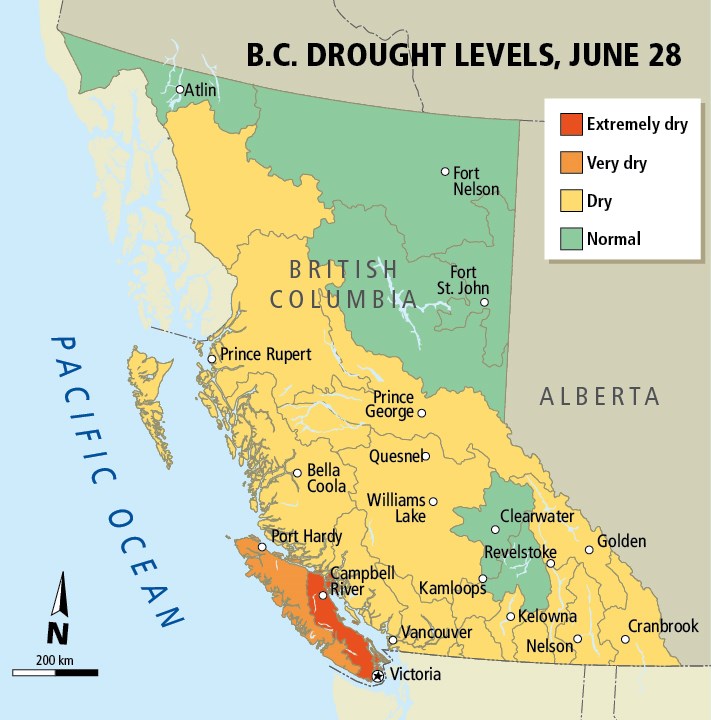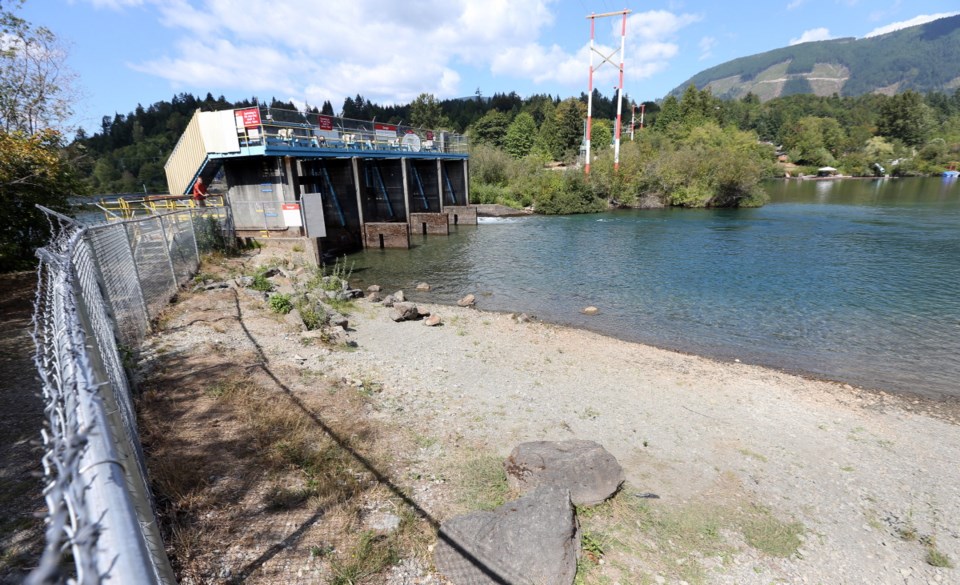Record high temperatures and low rainfall have prompted the province to upgrade the drought warning on southern and eastern Vancouver Island to its highest level.
Most rivers and streams will close to fishing on July 1.
The Ministry of Forests, Lands and Natural Resource Operations urged residents, industry, farmers and municipalities to reduce water consumption as much as possible.
“The less water that is consumed, the more water is available for fish, ecosystems and other water users,” said Valerie Cameron, manager of water stewardship, in a teleconference call Tuesday.
It’s the earliest the province has moved to a Level 4 or “extremely dry” rating on southern Vancouver Island since the rating system began in 2010. Last year, the region was upgraded to Level 4 on July 3.
“We’re hoping that the drought won’t be as bad as it was last year, but we are preparing just in case,” Cameron said.
Water systems supplied by large reservoirs, such as in the capital region, are less affected by the drought warning. But the government still wants users in those areas to conserve water and obey local sprinkling bylaws.
“Conserving water now will extend the length of time that water supplies will last,” Cameron said.
Ted Robbins, general manager of the Capital Regional District’s integrated water service, said the Sooke Lake Reservoir, which supplies water to Greater Victoria, was at 85.4 per cent capacity to start the week, compared with 86.9 per cent at the same time last year. But regardless of the relatively healthy supply, the CRD still encourages people to reduce their outdoor water use.
“Really, that’s to ensure we maximize the amount of water in our reservoir for indoor use and for fire protection,” Robbins said. “Although we were fortunate again this past winter to have the reservoir full recharge with precipitation, we can’t be guaranteed that. So the goal is to preserve as much water in that reservoir as possible in the event that we have back-to-back drought seasons.”
The province’s Level 4 drought warning extends from north of Campbell River and the Discovery Islands down the east coast of Vancouver Island, the government said in an information bulletin. It includes Victoria, Sooke and Port Renfrew. The rest of the Island is at a Level 3 or “very dry” rating.
Provincial officials are monitoring stream flows, fish, ecosystems and the impact on agriculture and industry.
Mike Ramsay, manager of fisheries, said the freshwater fishing closure will be in place until Sept. 1.
“The closures are deemed necessary because increased temperatures and reduced flows can have impacts on survival and stress levels in fish,” he said.
Big Qualicum, Puntledge and Quinsam Rivers will remain open for now, as will rivers and streams north of Campbell River, Ramsay said.




